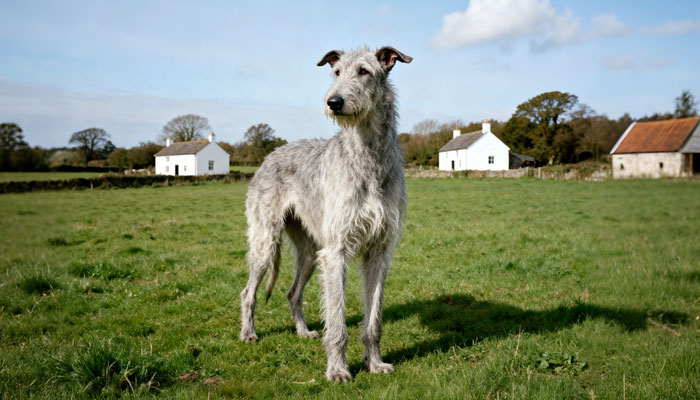Irish Wolfhound Breed Health and Care

As the biggest dog in the dog world, the Irish Wolfhound combines an elegant, upright stature with a gentle, calm nature, making it a unique character in the world of dog lovers. But it is precisely because of its singularness in terms of shape and the corresponding physiological construction that the Irish Wolfhound must undergo a more detailed and scientifically planned health care and routine care to maintain its high quality of life.
I. Common HealthIssues in Irish Wolfhounds
Hip dysplasia is a common hereditary disease in Irish Wolfhounds. Due to the possible mismatch between bone growth rate and muscle development, the hip joints may have some structural changes caused by the disease. In such a case, the dog may suffer from pain as well as limited ability to move, and in addition to this, some kinds of inflammation may also occur. Make sure that the parents of your chosen puppy have no hip problems, which have been checked by a professional. Do not perform heavy exercises on your dog in the mature stage to lessen the development of this disease.
Dilated cardiomyopathy can be a cause of health trouble in Irish Wolfhounds. This condition decreases the capacity of the heart to pump blood, with the symptoms being very mild in the initial stage and getting to tiredness and breathlessness at the advanced stage. Diagnostic tools such as echocardiograms used during cardiac check-ups are the best ways to establish early signs of irregularities.
Considering their big size, Irish Wolfhounds should be very careful when it comes to their digestive health. Gastric dilatation-volvulus (GDV), which is a very dangerous emergency that is common in big dogs, is the situation when the stomach is filled with air and the dog can not breathe because the air is trapped in the stomach and the dog continues to eat and after that does very hard exercise. This can make the stomach get twisted and in such cases, it can be a death cause. Make sure that the dog is given food at the same time and in the same amount every day. Never let the dog run or jump one hour before and after feeding.
II. Key points for the daily care of Irish Wolfhounds
Scientific daily care is basic to maintaining a wolfhound’s health. Items such as diet, exercise, coat care, and joint protection are all a part of the daily health care routine.
1. Nutrition: The Irish Wolfhounds have longer growth periods. Puppies should be fed large-breed puppy food which is rich in protein, calcium, and phosphorus so as not to be bone development is too fast due to too many nutrients. On the other hand, adults need less fatty diets so as not to experience excessive joint wear and tear caused by overweight. Vegetables can be used as well for the provision of fiber, but the dog must not eat toxic foods like onions and grapes.
2. Exercise: Despite their size, Irish Wolfhounds are not “athletic champions” as one would expect. Overly intense physical training will just wear out their joints faster. Taking a walk for 30 to 40 minutes once or twice a day is considered to be sufficient exercise and at the same time it will not be too much for the dog’s body. The puppies must also refrain from doing activities such as climbing stairs or jumping so as not to hurt their joints.
3. Using slicker brush (1-2 times) removes loose hair. Coat waxing during shedding seasons (spring and fall) makes the undercoat get cleansed and it also prolongs the coat’s life. Maintaining joint protection is very important as well. Soft mats could be installed under the dog’s resting areas so that there would not be any direct contact with the hard floor. For middle-aged dogs, you may take the advice of your vet and use glucosamine and chondroitin supplements to help with cartilage regeneration in the joints.
admin
-
Sale!

Washable Pet Cooling Pad for Cats and Dogs
$10.99Original price was: $10.99.$9.99Current price is: $9.99. This product has multiple variants. The options may be chosen on the product page -
Sale!

Washable Cat Window Hammock Cooling Bed
$23.99Original price was: $23.99.$22.99Current price is: $22.99. -
Sale!

Tropical Amphibian Rainforest Tank, Lizard Cage
$38.99Original price was: $38.99.$36.99Current price is: $36.99. -
Sale!

Silent 4-in-1 Waterproof Charging Dog Hair Trimmer
$49.88Original price was: $49.88.$47.99Current price is: $47.99.